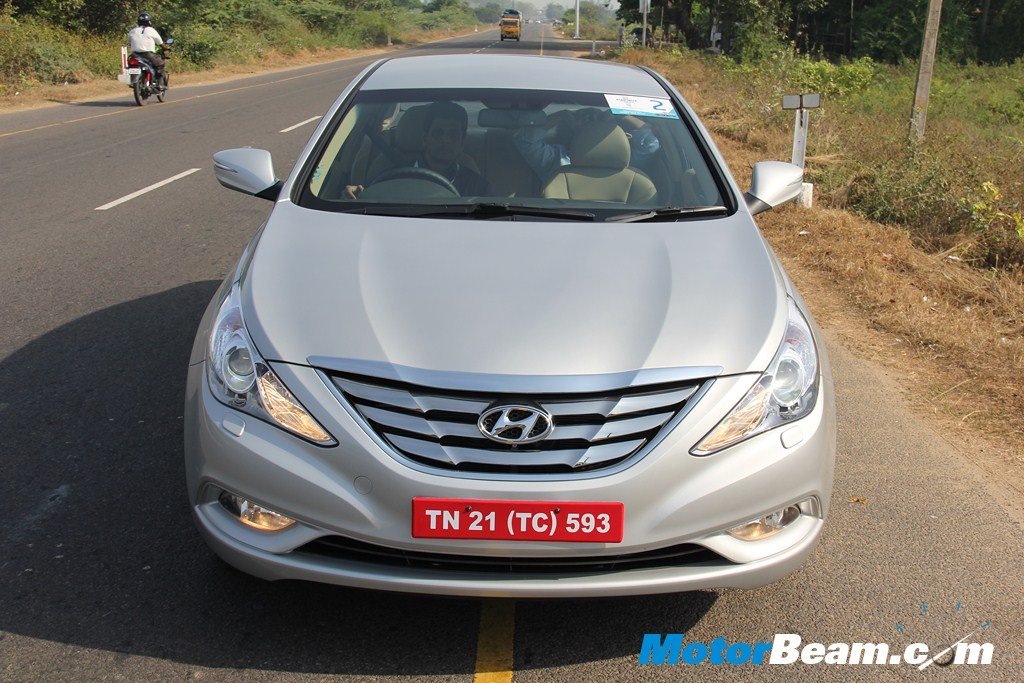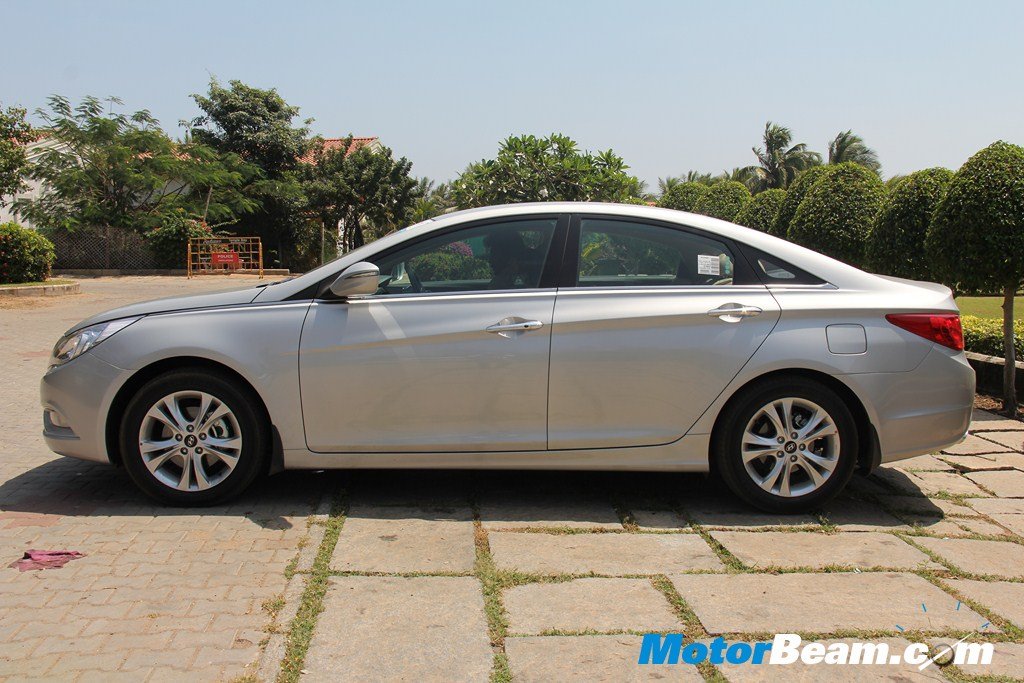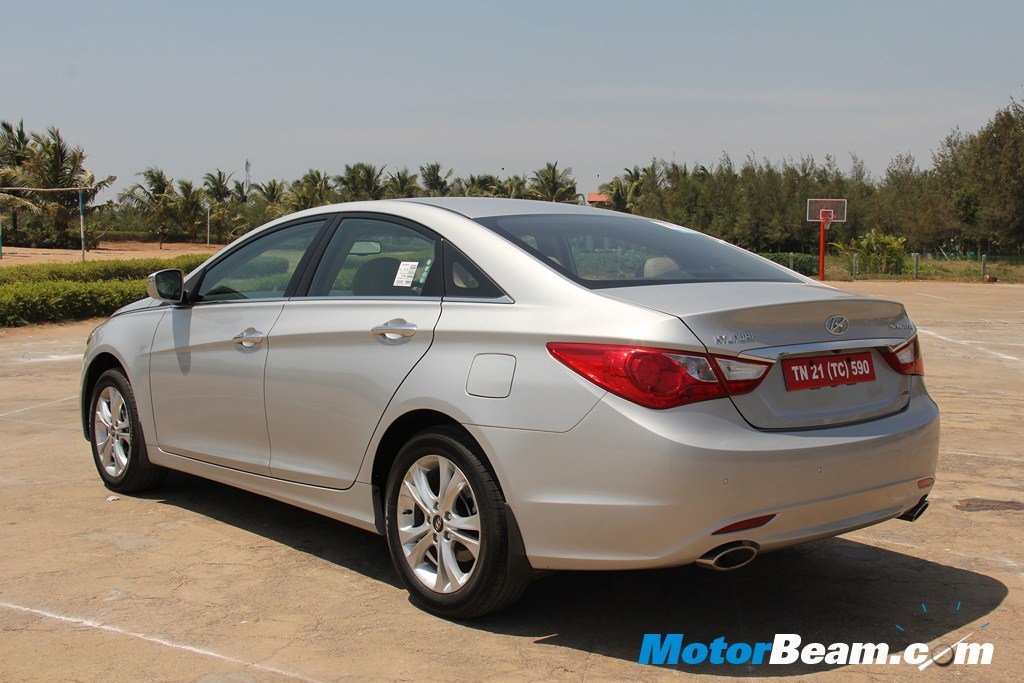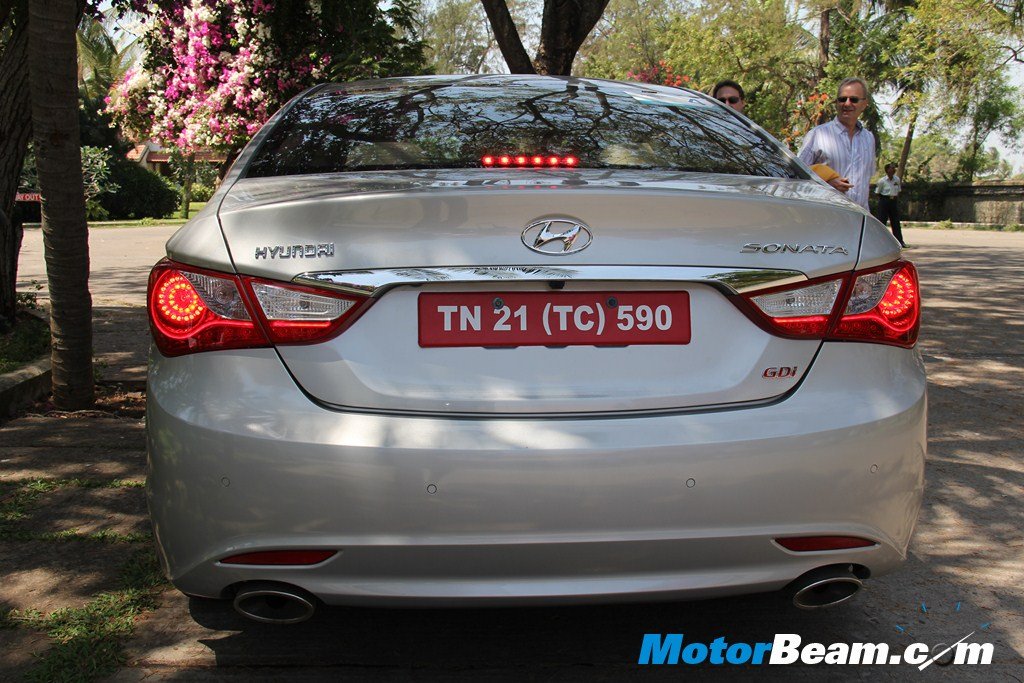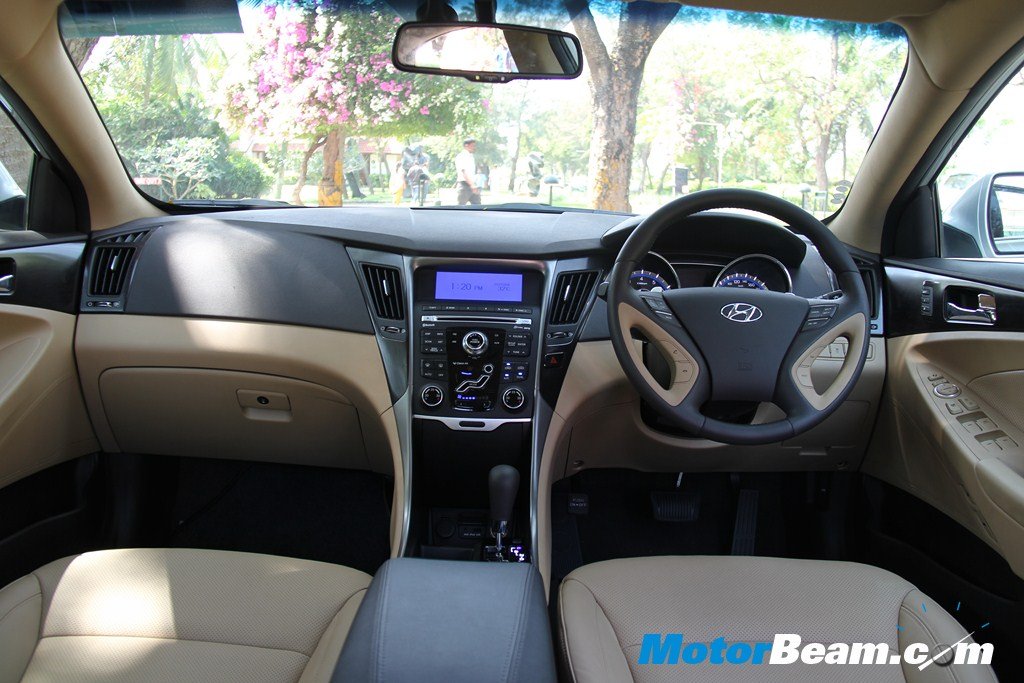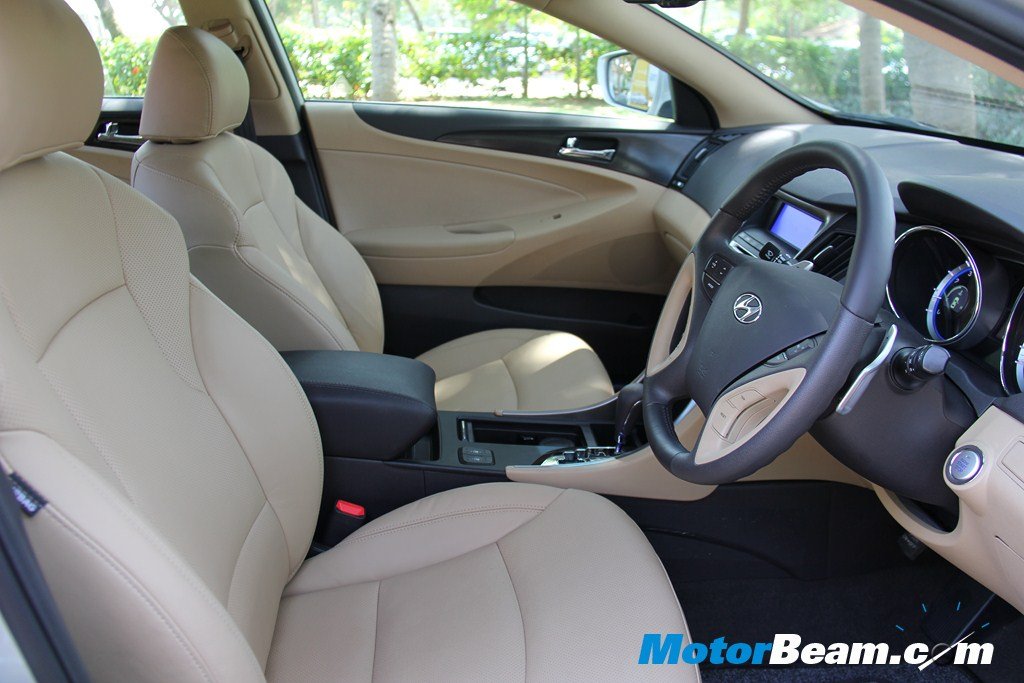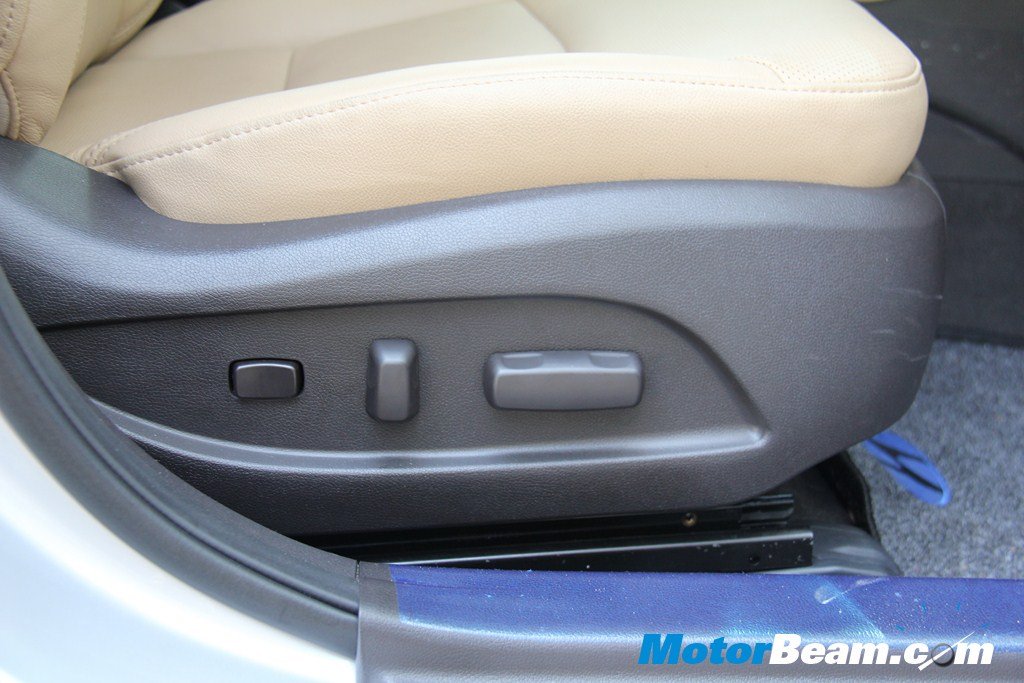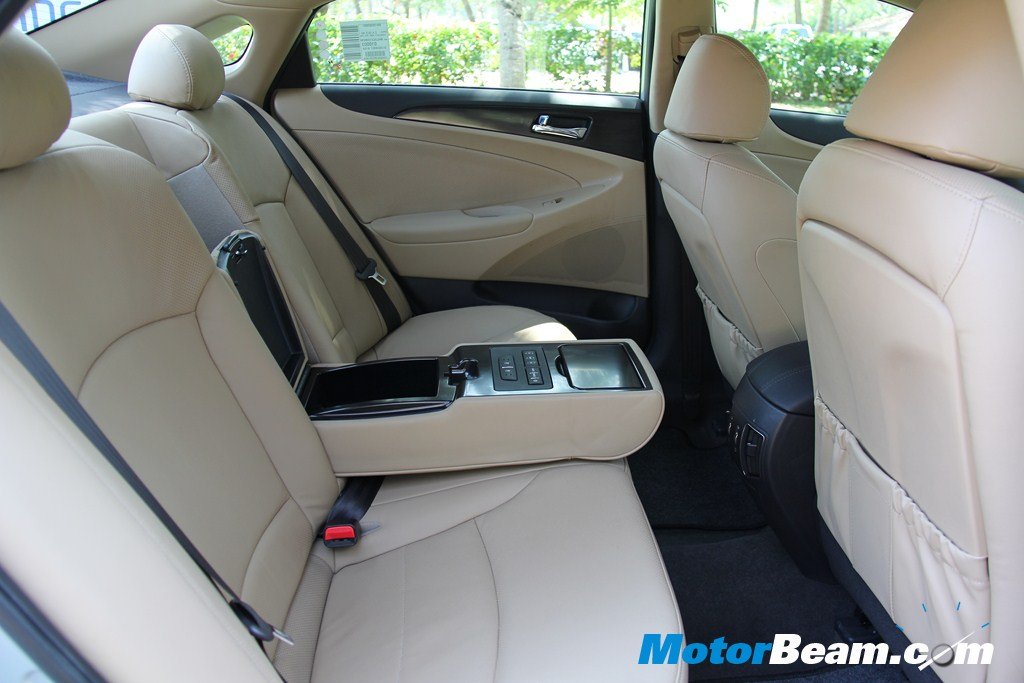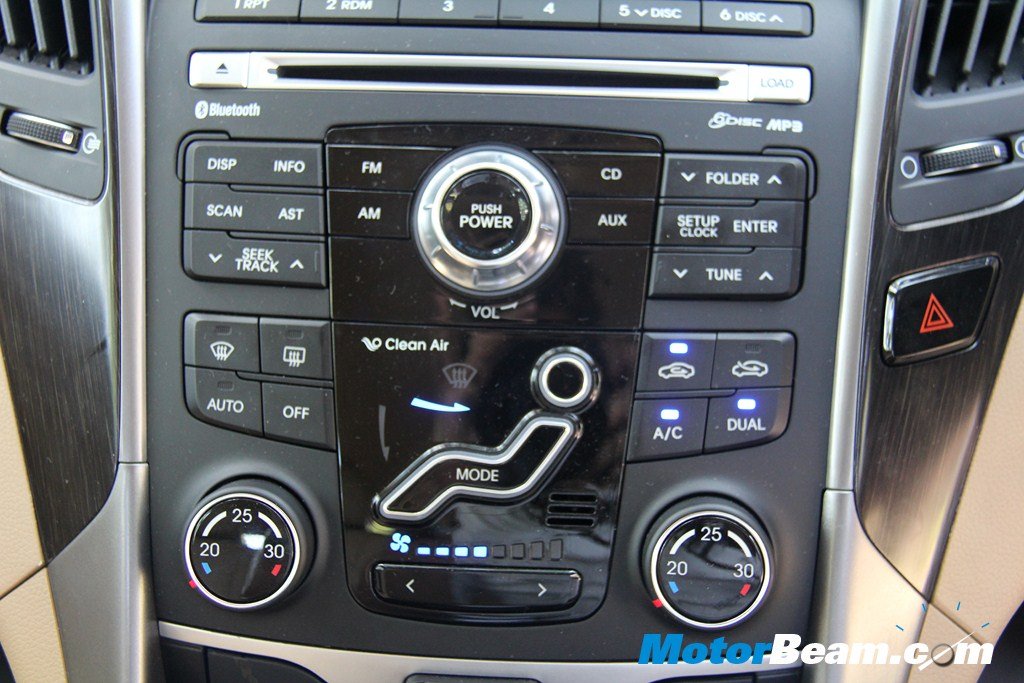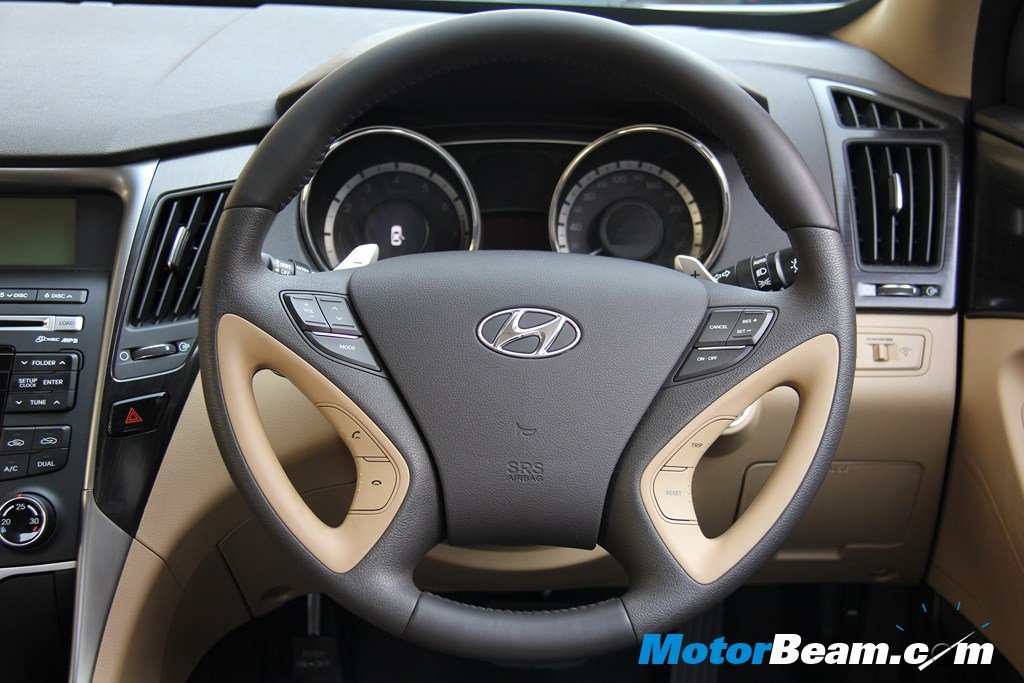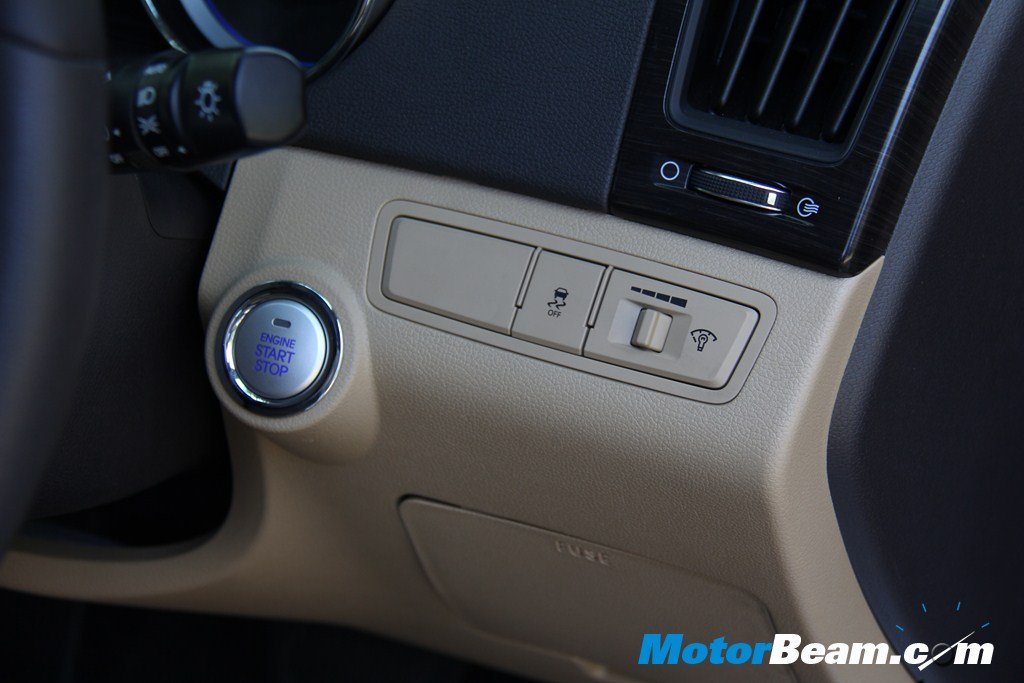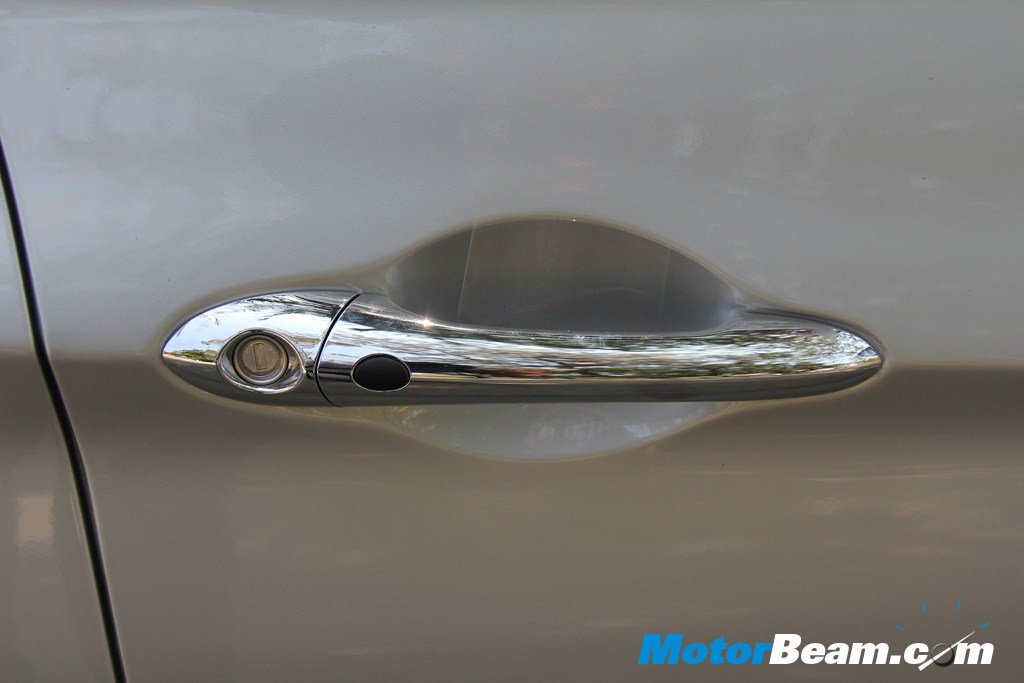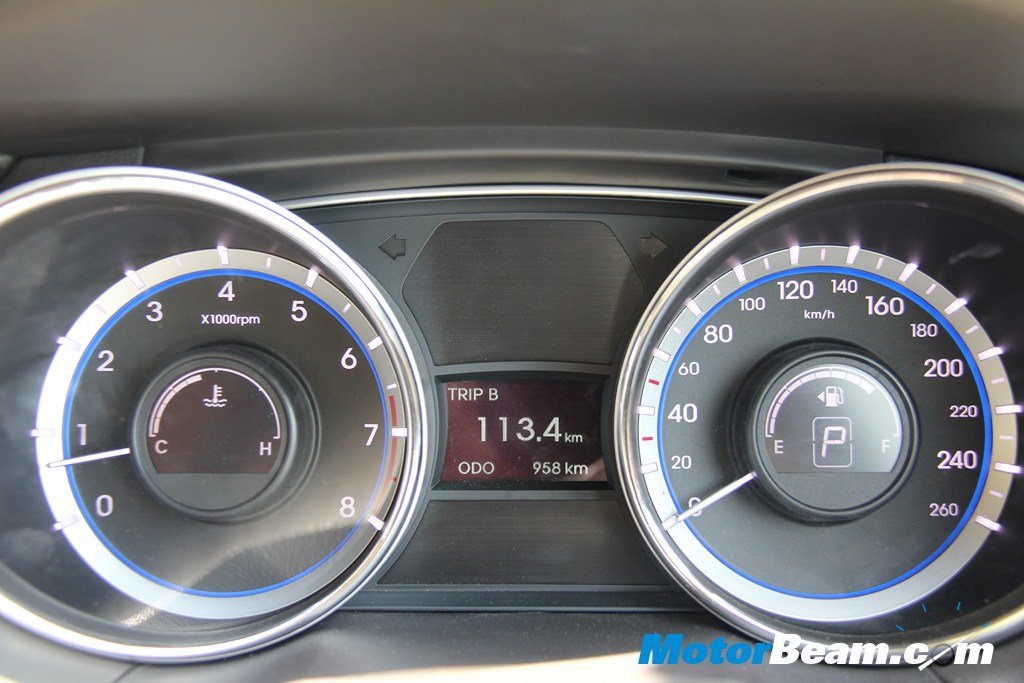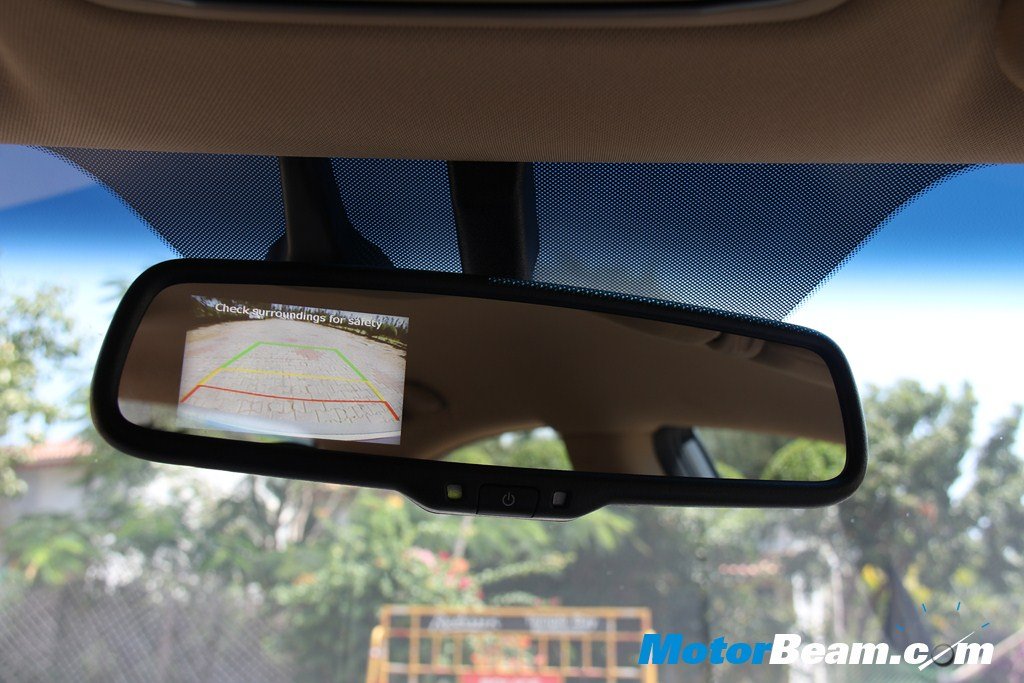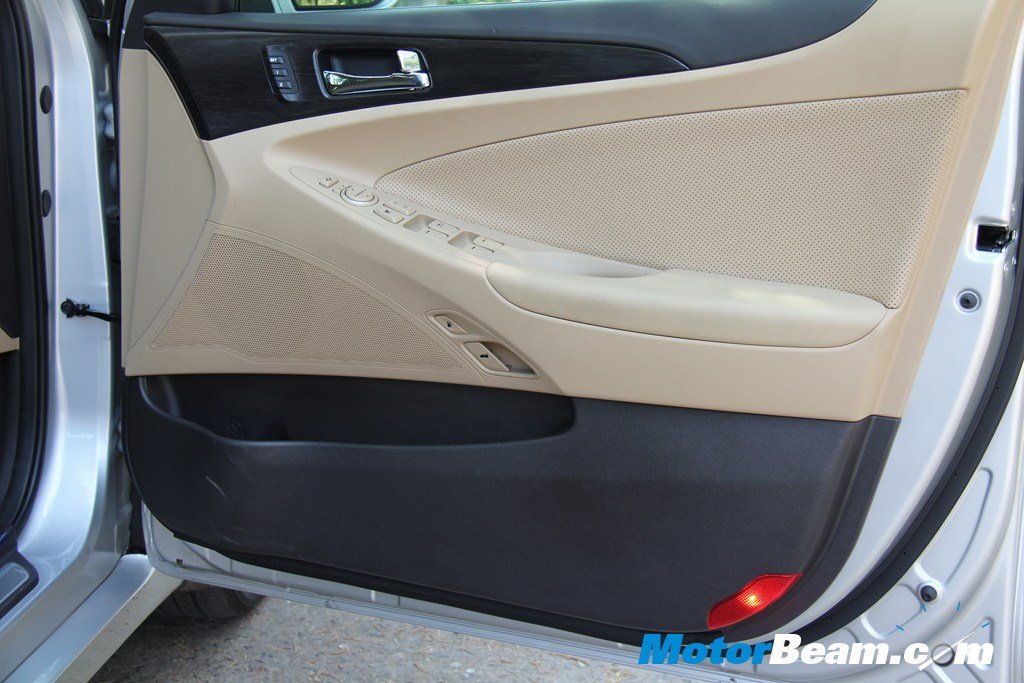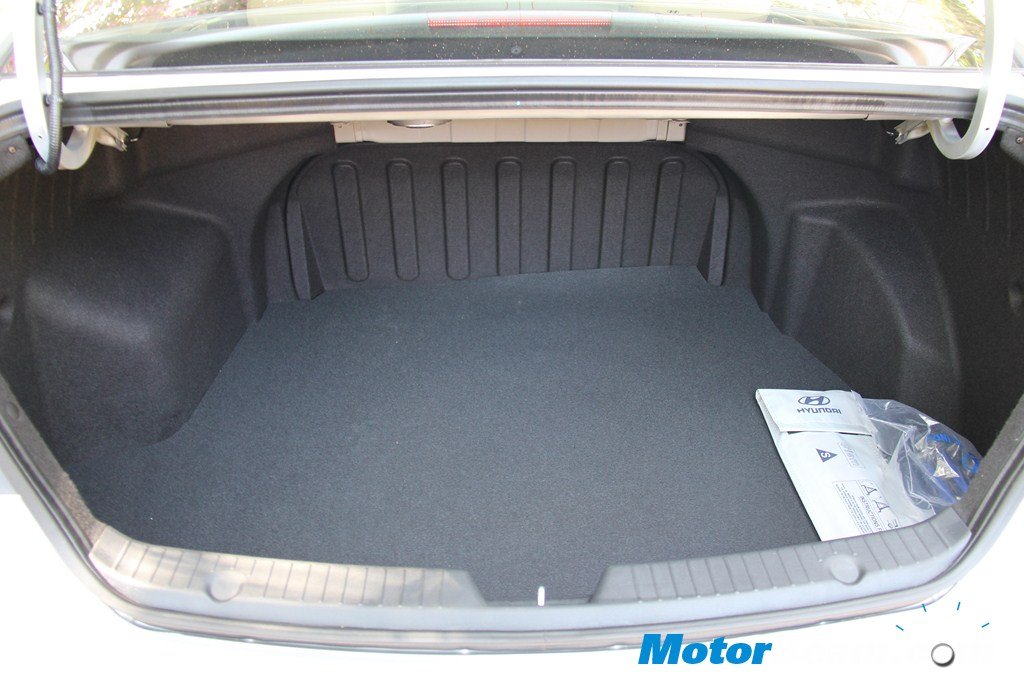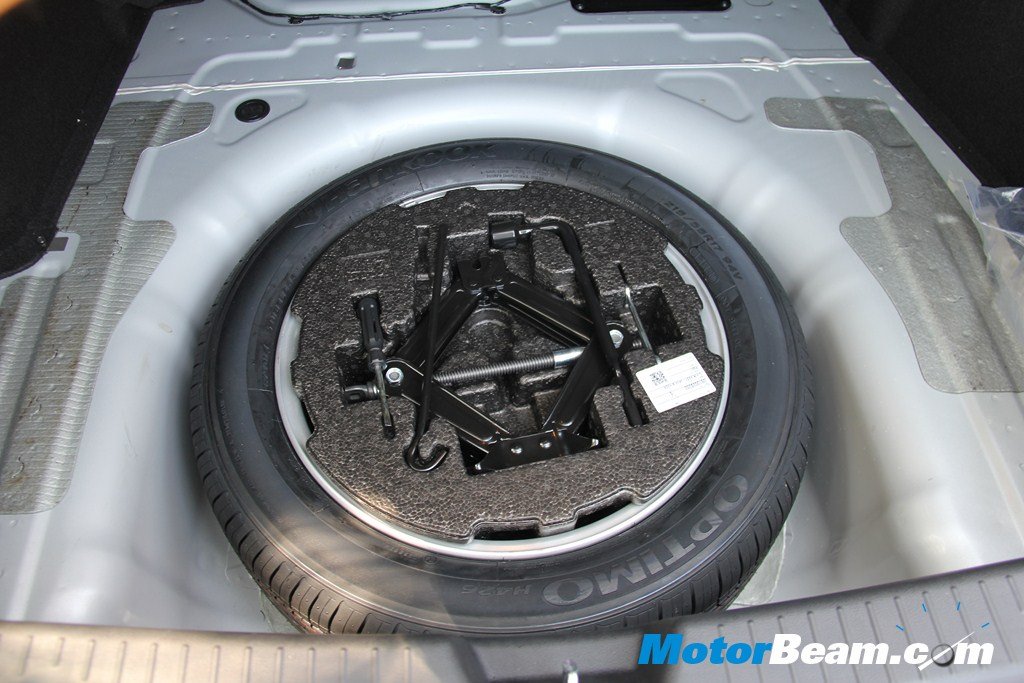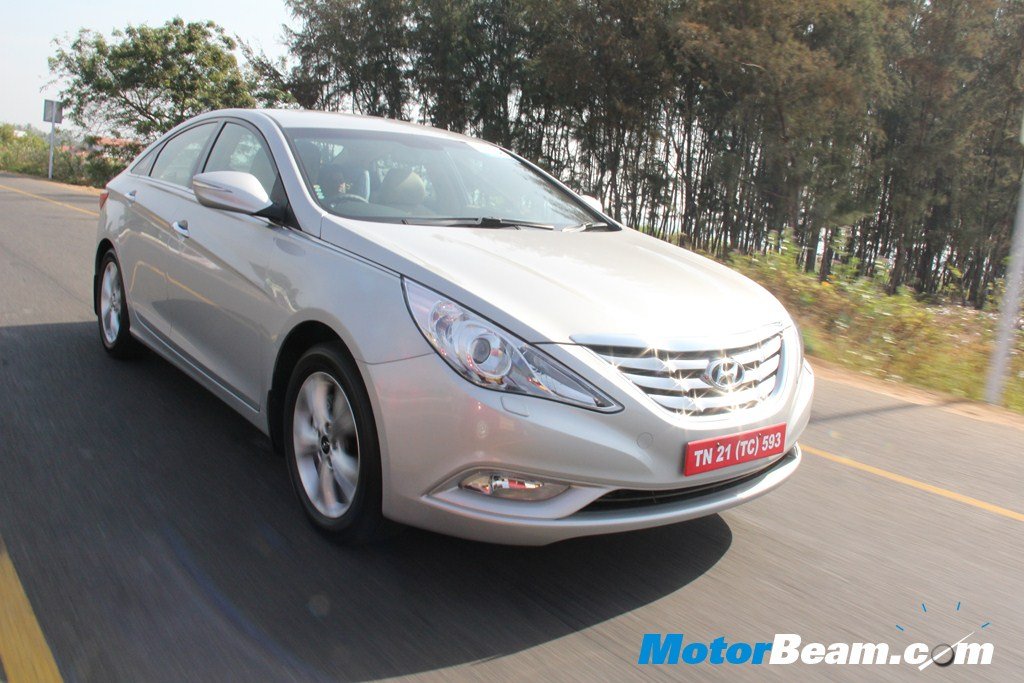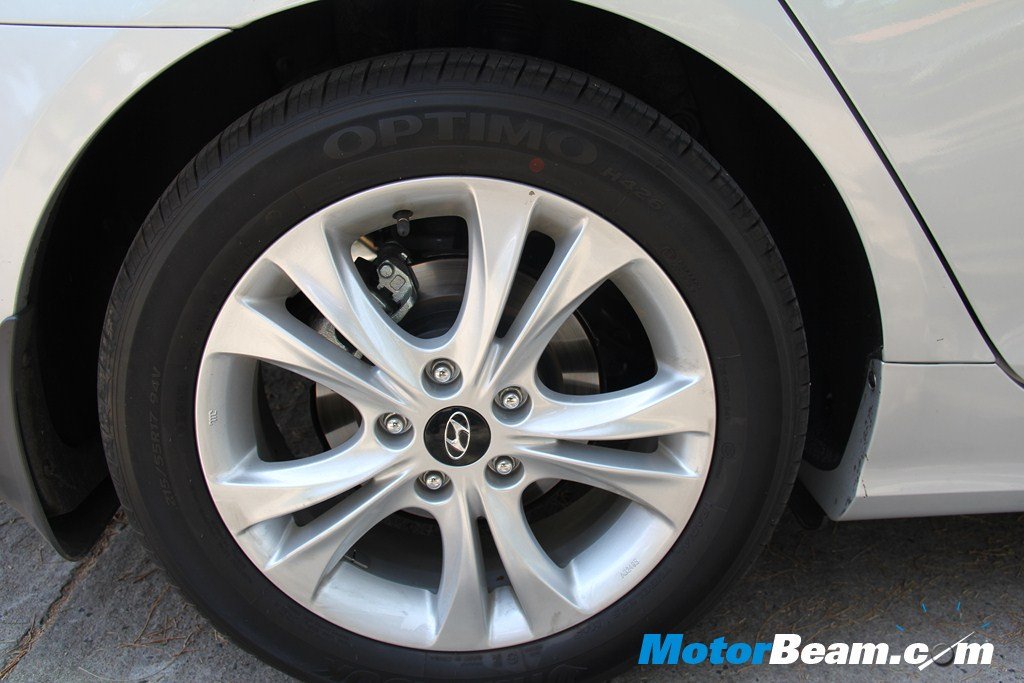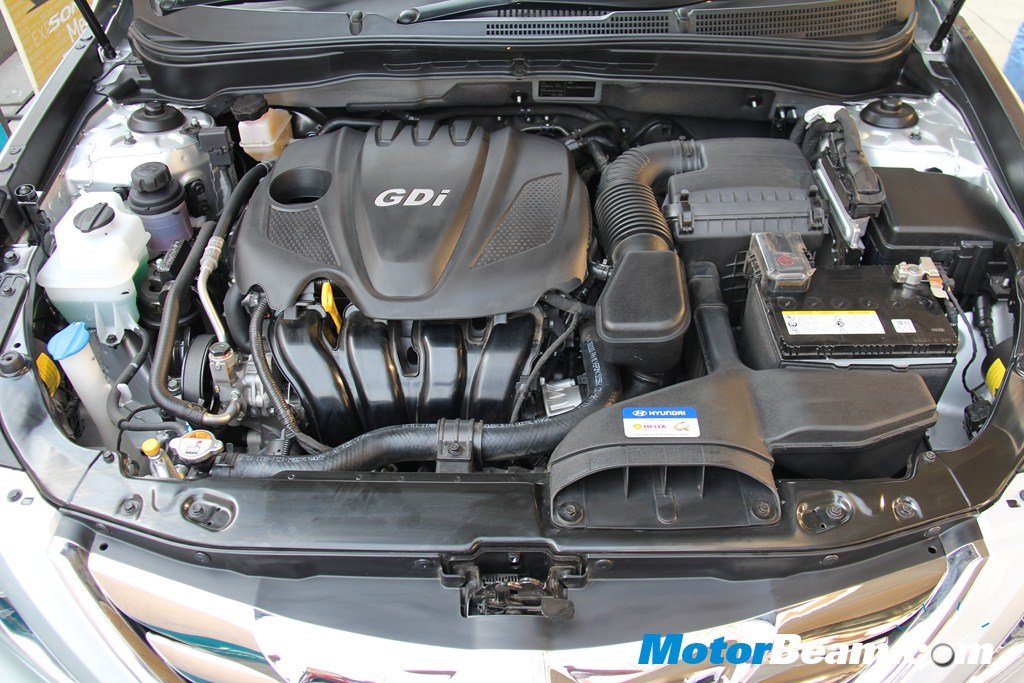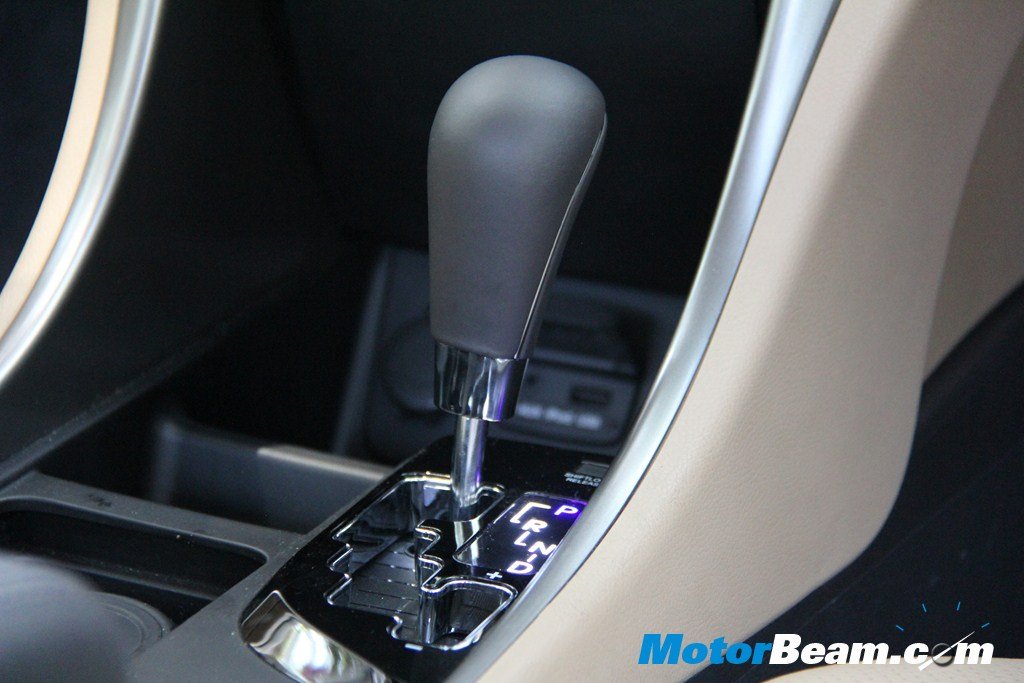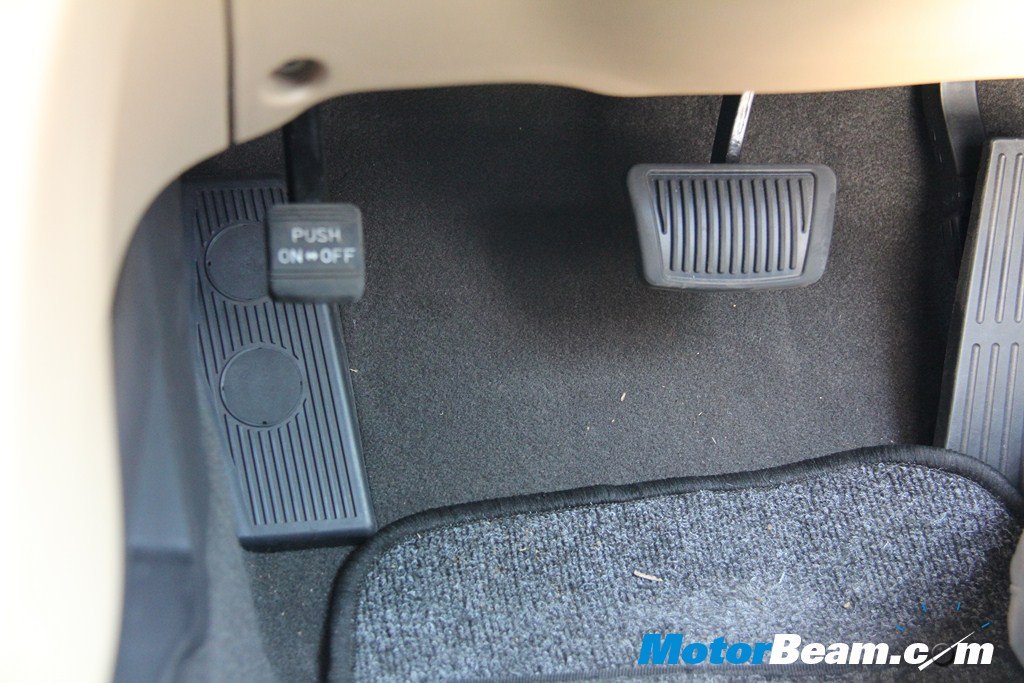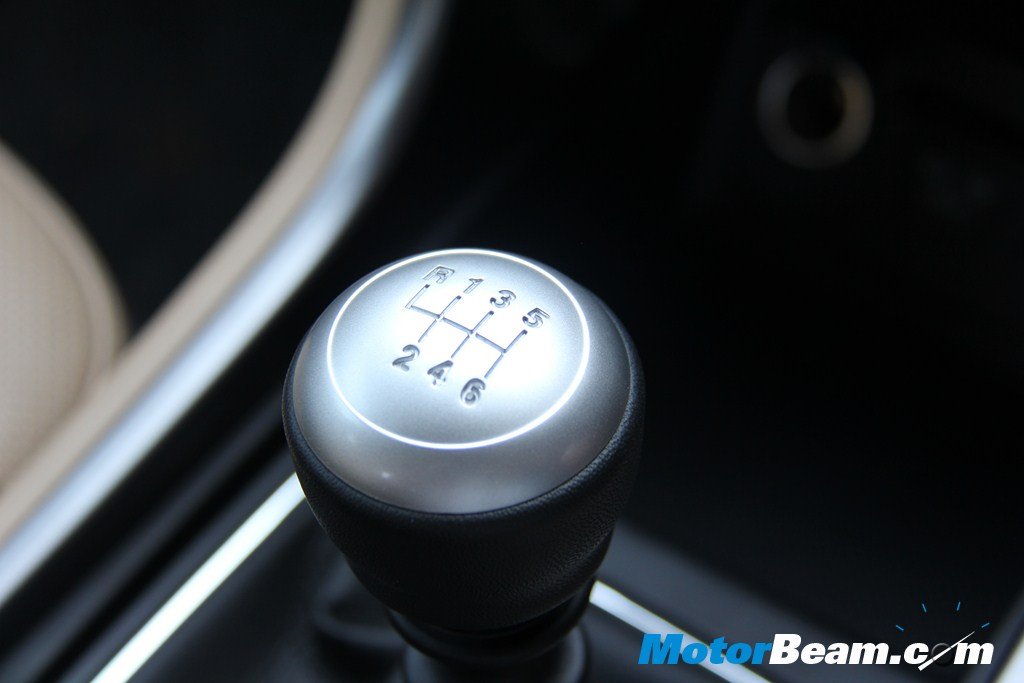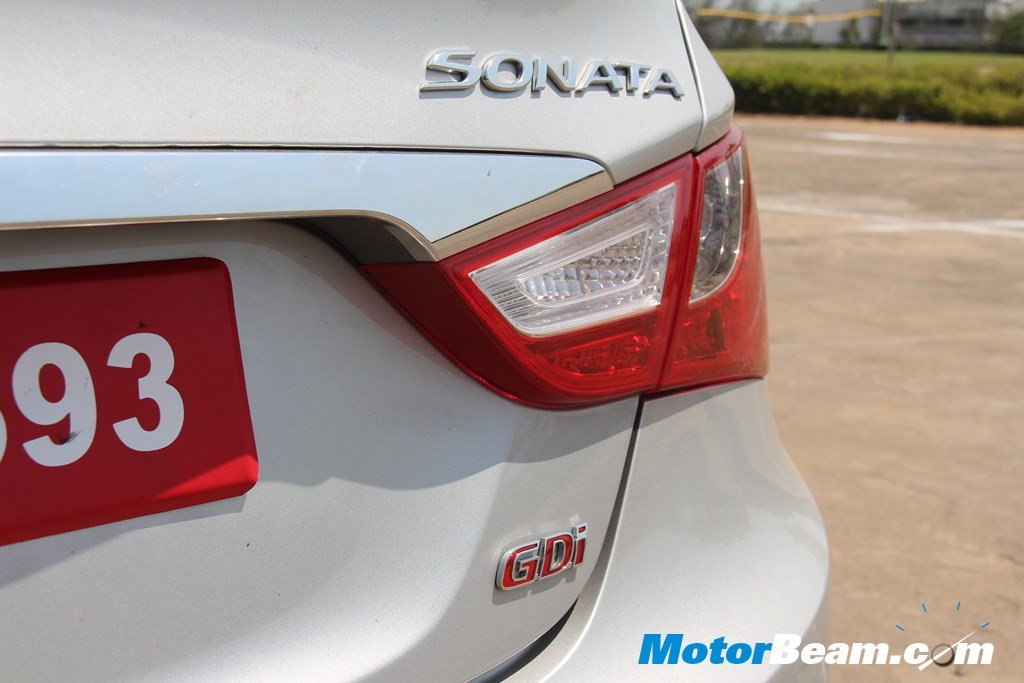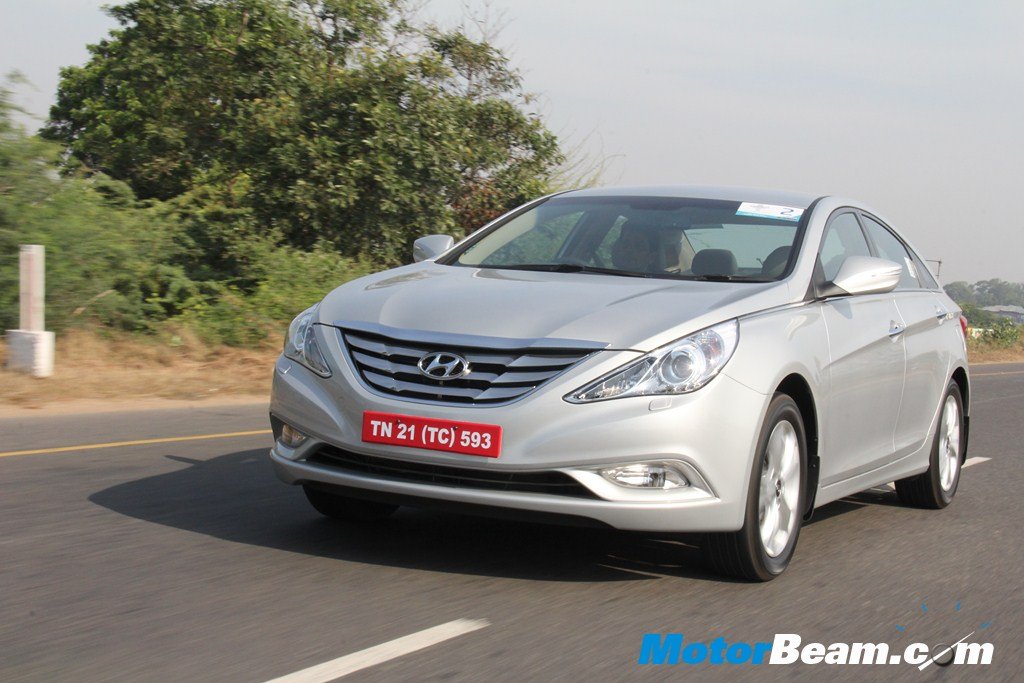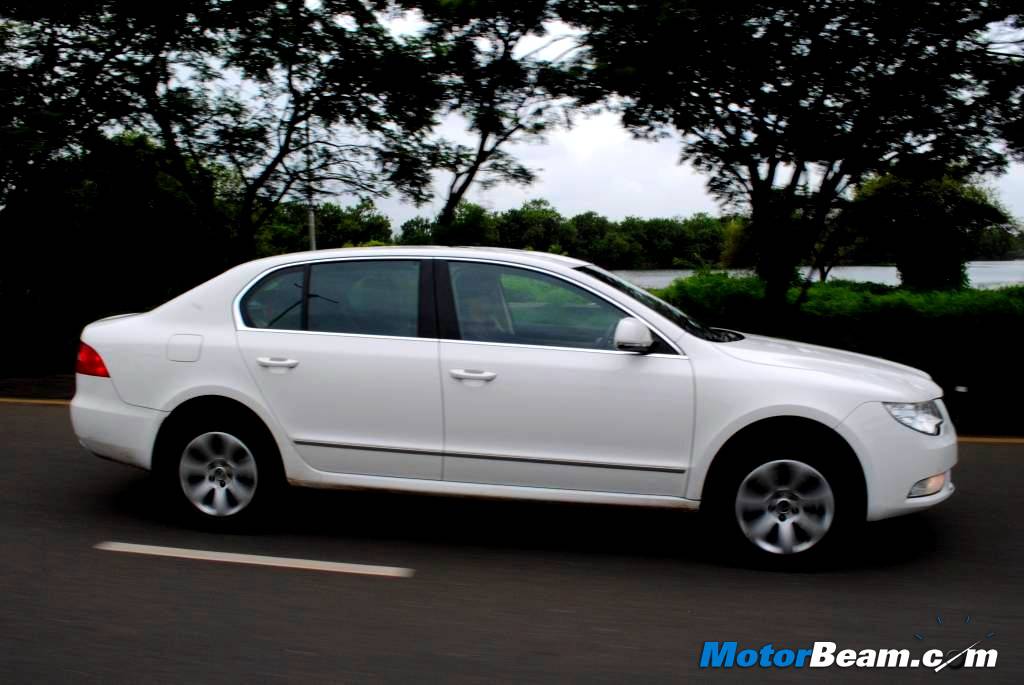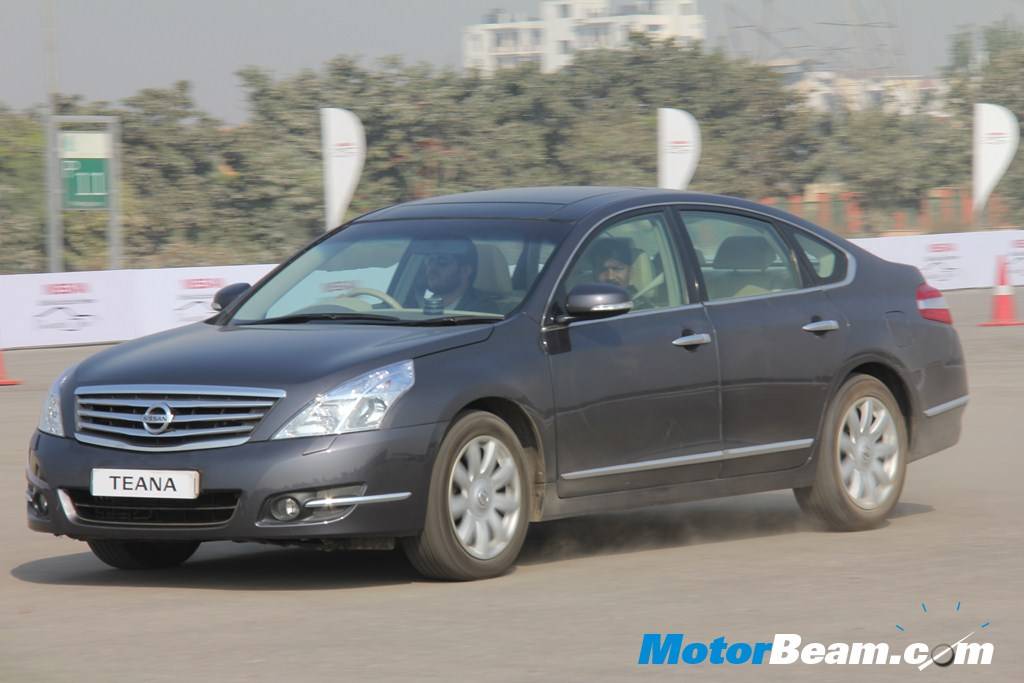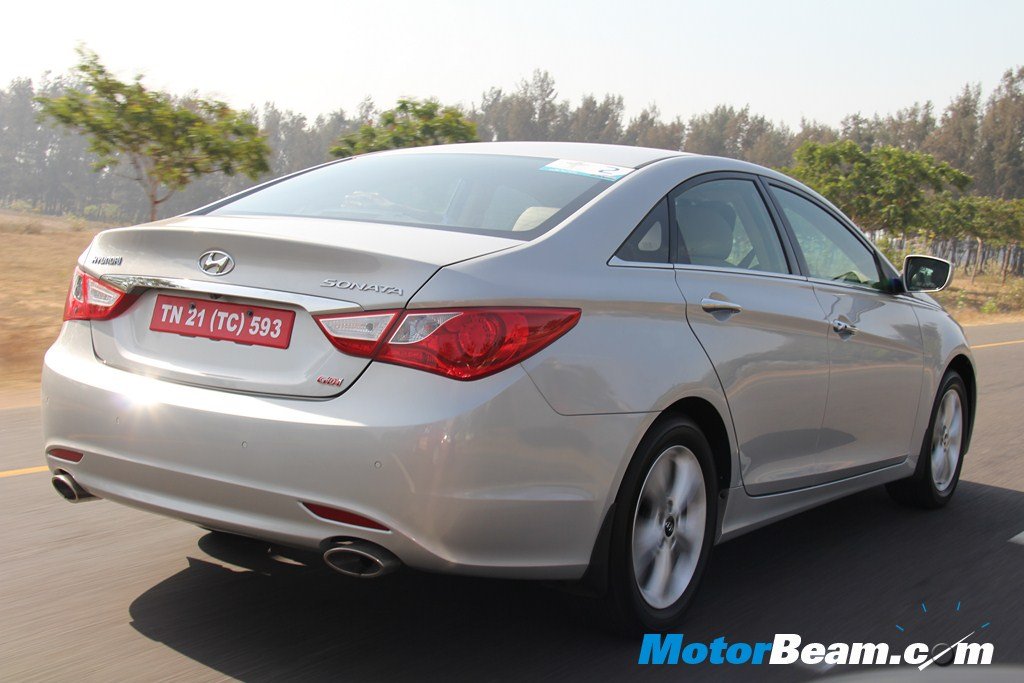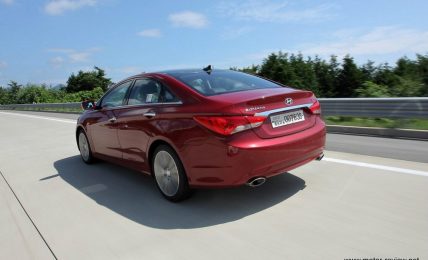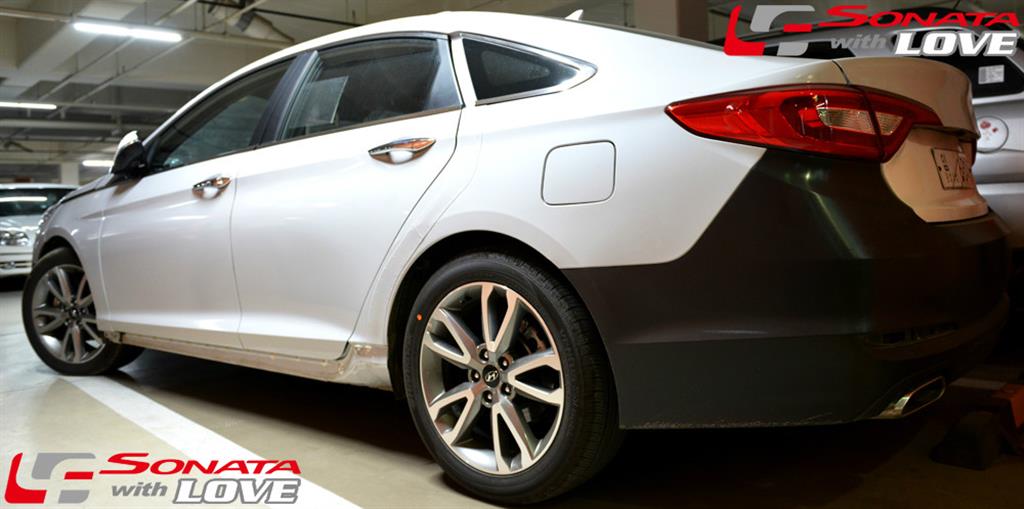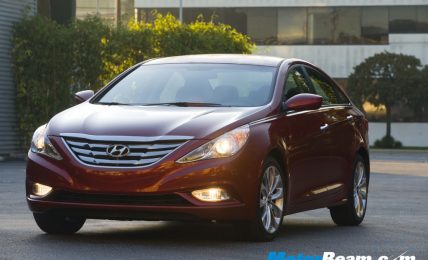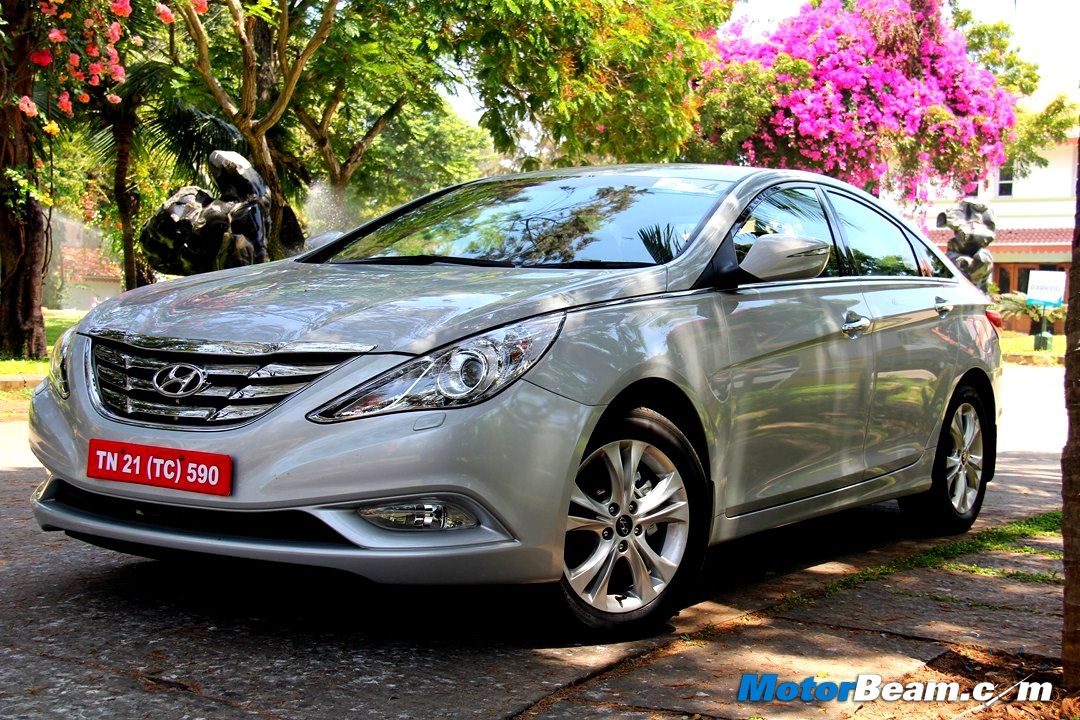
Car tested: 2012 Fluidic Hyundai Sonata
Price OTR Mumbai: Rs. 22,23,404/- (MT); Rs. 24,93,091/- (AT)
The Hyundai Sonata (4th Generation) made way into the Indian market for the first time in the year 2001 and soon made waves, as not many competitors offered the space and features it boasted off. In 2005, it was replaced with the 5th Generation Sonata Embera which went through the surgeons knife for a cosmetic makeover a couple of years ago. Today, in its 6th generation, Hyundai has incorporated its latest ‘Fluidic Design’ philosophy to make the Hyundai Sonata a mouthwatering prospect, we take it for a drive along the beautiful ECR road from Chennai to Pondicherry and find out if it’s just as pleasing to drive as it is to the eye.
Exteriors – The Hyundai Sonata is one hell of a looker and there are no two ways about it. In fact, out of all the cars in the segment, it is the most appealing to the eye and I am confident most will agree with me on this. The hood imbibes creases which continue into the grille representing flowing water, looking beautiful. You have to give it to the man, Andre Hudson, the brainchild behind the iconic Fluidic design and the way it gels with the car is phenomenal. The headlamps swoop all the way backwards and the HID projector lamps look classy. Headlamp washers are provided too. The front bumper is also sculpted to enhance the design, fog lamps also look futuristic. External rear view mirrors have integrated turn lamps with sculpted lines to go with the Fluidic philosophy.
Hyundai has gone for a coupe look with the Sonata and the side profile clearly shows the roof sloping towards the boot. Notice the chrome strip which runs right from where the headlamps end to the C-pillar, it makes the car look so much richer. 10-spoke alloy wheels enhance the side profile but what really steals the show here is the sculpted crease which runs backwards and upwards from the front wheel arch to right above the tail lamp and blends into the boot with superb precision.
This can be appreciated better in this angle.
The tail lamp assembly looks stunning, especially when the brake lights are on. Attention to detail deserves a special mention, along with the LED lights, a red streak flows out towards the center of the Hyundai Sonata. A chrome strip joins the tail lamps on either side. Parking sensors can be seen embedded into the bumper with the camera finding shelter below the Hyundai logo. Twin exhaust personify the engines capability. Notice the integrated spoiler at the tip of the boot, it plays a role in making the car more aerodynamically efficient.
Interiors – Two tone beige and greyish black interiors with dark wood inserts look and feel good. There is a clear division between the front seats, giving a cockpit feel. Interior quality is top notch with as good fit and finish. No inconsistent panel gaps and good quality plastics. Matt finish dashboard looks elegant. Central console gets a silver border.
The front seats are comfortable with sufficient back and under thigh support. Headroom and legroom are sufficient too. Both the front and rear seats are ventilated in the AT version, the buttons for which are located just behind the gear lever for the front seats and in the central armrest (rear) for the rear seat. The manual version, however, get ventilated seats only at the rear. The common perception being that the manual version of the Hyundai Sonata will be the choice for the chauffeur driven while the AT version is likely to be bought by individuals who will be driving themselves.
In the Automatic variant, there is a 10-way electronic adjustment (including lumbar support) for the driver and 4 way electronic adjustment for the front passenger. 2 Memory options available for the driver. Lots of storage space in the car especially in the front armrest, which along with the glove box has a chilled compartment.
Rear seats are comfortable with adequate back support but i would have loved an extra bit of under thigh support. The coupe like sloping roof line does not compromise the headroom at all. Central armrest includes a 12V charging point and audio controls for the rear passengers.
Sound quality is one of the best I have seen in the given segment. The system comprises of 4 speakers, 2 tweeters, a woofer and an amplifier. USB and AUX connectivity is provided. Music can also be streamed from your phone once it is paired with the car’s Bluetooth. The A/C cooled the car quickly in the hot Chennai weather, I was chilled out so as to speak courtesy of the ventilated seats. Vents are provided at the back too.
The steering also sports two tone beige and greyish black upholstery. Buttons for Phone, Audio and Tripmeter/MID are provided. The AT steering also houses cruise control buttons. This feature is not provided in the manual version.
The automatic version of the Hyundai Sonata is obviously more pampered and gets push button start. You need to turn the key in the ignition to get the manual variant to start. Traction control can be turned off but will automatically switch on once the car detects loss of traction.
The AT variant gets a smart key, similar to the Nissan Micra. Just press the black button and the door will open if you have the key on you.
I loved the circle – in – circle instrument cluster. The MID shows trip distance, trip time and average km per hour, surprisingly, it does not show the distance to empty and mileage. I brought up this point with the Hyundai officials, and they have taken my feedback and promised to work on it.
Similar to the Hyundai Verna, the reverse camera screen shows up on the rear view mirror, when engaged into reverse. The center button activates the dimming feature, which reduces glare at night. Amongst other features, the list includes rain sensing wipers and automatic headlamps.
Driver side door has the memory seat buttons. I was unable to find the boot release switch for sometime, its hidden away when the door is closed. The boot does not get an electromagnetic release, can be opened with the above mentioned switch and the button on the key.
Generous boot space.
Spare tyre gets alloy treatment.
Ride, Handling and Braking – The new Hyundai Sonata sports independent suspension for all four wheels, making for a comfortable ride experience, both in the front and back. At slow speeds, the suspension will absorb all the bumps on the road with only the unusually deep ones seeping into the cabin. At high speeds, the car does tend to bounce on uneven surfaces but is extremely compliant on well surfaced tarmac. The suspension setup is soft, a typical Hyundai trait, but with much better driving dynamics. There is no doubt that a car in this segment is pitched for comfort and is not meant to be an outright handler, however the handling dynamics were better than I expected. Hyundai cars are usually not comfortable with sudden changes in direction, the Hyundai Sonata seemed to be certainly the best of the lot, it does have the family trait but is far more predictable as far as the handling is concerned. The weight and weight distribution has a role to play in this case. Being heavier, the Sonata felt well planted at triple digit speeds. The steering felt a bit heavier for routine city driving but feedback at high speeds was decent, not the best for sure but enough to give you confidence to push the pedal harder.
All 4 disc brakes coupled with ABS, EBD and TCS do the job fantastically well. I stood on the brakes at 100 km/h and no dramas at all. The Sonata stopped in a line with no sideways twitch. To put the TCS under test, I did the same test, but this time I was braking from 60 kmph with two wheels on sand and two on tarmac. No glitches here too and I did feel very safe inside the car. 215/55/17 inch Silica tyres are grippy and never did the car slip or slide. Silica tyres give much more grip than regular tyres.
Performance – The 2.4-litre GDI (Gasoline Direct Injection) produces 201 PS of power at 6300 ROM and 250 Nm torque at 4250 ROM. This technology is similar to CGI technology used by Mercedes-Benz. The dual variable timing valve train works by optimizing the opening and closing timing of intake and exhaust valve based on engine rpm and load thereby improving engine performance and fuel economy while helping reduce emissions. The engine is powerful and did not seem to struggle with 3 heavyweights and luggage on board. We hit 120 km/h comfortably, the engine was certainly capable of more but the ECR road was not the right place to unleash the engine to full song. Engine note tends to get very loud at higher RPM, refinement could have been better.
Mated to this engine is an option of 2 gearboxes. A 6 speed single clutch automatic and a 6 speed manual. My first stint in the Hyundai Sonata was in the Automatic variant. Hyundai has offered tiptronic function along with paddles, thus appealing to both the enthusiast and the daily city driver. Peak power lies around the 6300 mark hence the Sonata has a strong mid-range and high end punch, the low end of the rev-meter is strictly average. Feed the throttle in and you can get this gearbox to shift at low RPM’s resulting in better fuel efficiency. While overtaking, this gearbox tends to be lazy especially while shifting from sixth to second gear, in such situations, the paddles come in handy with the paddle response being certainly quicker. I was trying in the manual mode using the paddles for most of the time and I must admit, the Sonata sure was fun to drive. This gearbox uses a slot shift mechanism.
The AT variant gets a push type parking brake in the footwell. The manual variant gets a conventional handbrake lever.
The manual variant also gets a 6-speed gearbox. Gearshift is smooth and slick with no notchy feeling. The 2.4-litre GDI engine loves to be revved hard and redlines at approximately 6700 RPM. For the purpose of product differentiation, a few features have been removed from the manual variant and we expect the price of the manual to be cheaper by approx Rs. 1.75 lakh on the pocket.
We did not get a chance to determine the mileage figures but an arbitrary calculation suggested that our car was delivering about 9 km to a litre which is pretty good considering we were hitting the redline continuously. ARAI certified figures are not available yet and Hyundai is confident that the Sonata will deliver class leading mileage.
Conclusion – The Hyundai Sonata has all that it takes to impress the customer, style, substance, space, performance and a healthy list of bells and whistles. Not only does the Fluidic design impress at first glance but also makes a bold road presence. The Sonata has not been doing great numbers lately and this new model is all set to turn the tables for Hyundai. With top class safety and a power packed performance, you just cant miss this one. In a cost sensitive market, the pricing will play a crucial role in the success of this car and we reckon Hyundai can surprise us pleasantly.
Whats Cool
* Styling & Road Presence
* Features list
* Ventilated seats
* Safety features
Whats Not So Cool
* No Diesel Option
* No Distance to empty in MID
* Heavy Steering at low speeds
Quick Comparison With The Competition
[singlepic id=8158 w=540 h=375 float=center]
Honda Accord – The Honda Accord was the leader in this segment until the shift towards diesel engined cars happened. The Accord looks premium and is powered by a 2.4-litre i-VTEC motor which produces 180 PS of peak power at 6500 RPM and 222 Nm of peak torque at 4300 RPM. The 5-speed manual variant of the Accord returns 12.88 km/l and is priced at Rs. 22.86 lakhs, while the 5-speed automatic variant (offers Paddle Shift) returns 11.8 km/l and is priced at Rs. 22.76 lakhs (all prices on-road, Mumbai). There is a 3.5-litre V6 (275 PS, 339 Nm) variant too on offer which is priced at Rs. 30.87 lakhs. The Accord is longer and wider than the Hyundai Sonata and offers good handling and extremely eager motors.
Skoda Superb – The Skoda Superb is the biggest competitor in this segment, because the car is as its name suggest, Superb. Powered by a 1.8-litre turbocharged engine, the Superb TSI produces 160 BHP of peak power between 4500-6200 RPM and 250 Nm of peak torque between 1500-4500 RPM. There is little doubt that this engine is a gem and power delivery is smooth throughout the revv range with almost little or no turbolag. Refinement levels are extremely high and the same engine does duty on the Laura R S as well. The 6-speed manual variant of the Superb returns 13.1 km/l and is priced at Rs. 21.74 lakhs, while the 7-speed automatic DSG variant returns 13.7 km/l and is priced at Rs. 23.54 lakhs (all prices on-road, Mumbai). The Skoda Superb is slightly longer than the Sonata (the Accord being even longer) but the back seat space of the Superb is unmatched.
Nissan Teana – The Nissan Teana is a very underrated car. It is powered by a 2.5-litre V6 engine which produces 182 PS of power at 6000 RPM and 228 Nm of torque at 4400 RPM. The engine is mated to a CVT gearbox. The Teana is not the widest in its segment but its quite long. The Teana is feature lade with Xenon headlamps, front seats electricat adjustment, ventilated front seats, 6 airbags and leather everywhere. Available in two variants, the Teana 250XL is priced at Rs. 24.80 lakhs, while the top end Teana 250XV is priced at Rs. 29.13 lakhs (on-road, Mumbai).
[singlepic id= 10197 w=540 h=375 float=center]
Toyota Camry – The Toyota Camry is in its 8th generation and will soon go on sale in India. Toyota showcased the car at the 2012 Auto Expo but did not reveal prices. However what we do know is that the new Camry will be priced aggressively as it will be assembled locally, going the CKD route (the old Camry was brought in as a CBU). This will result in a pricing of around Rs. 23 lakhs, which will make the Camry a serious contender for the Hyundai Sonata. The Toyota Camry is powered by a 2.5-litre petrol engine which uses Dual VVT-i technology to produce 178 BHP of power at 6000 RPM and 230 Nm of torque at 4100 RPM. The Camry offers comfort and space to the passengers but no longer offers the carpet ride it was known for before.
2012 Hyundai Sonata Specifications
* Engine: 2359 cc, D-VTVT, Gasoline Direct-Injection (GDI)
* Power: 201 PS @ 6300 RPM
* Torque: 250 Nm @ 4250 RPM
* Transmission: 6-speed manual and 6-speed automatic with paddles and tiptronic
* Top Speed: 220 kmph (est)
* 0-100 kmph: 9 seconds (est)
* Fuel Consumption: 9 – 10 km/l (est)
* Fuel Type: Petrol
* Suspension: Mcpherson with coil spring + H-sub frame with ASD (Amplitude Selective Damper) (Front), Multilink sporty with ASD (Amplitude Selective Damper) (Rear)
* Tires: 215/55/17 Tubeless Silica
* Brakes: Ventilated Discs (Front), Drums ( Rear), ABS, EBD
* Safety: Dual SRS Front Airbags, Side Airbags, Rear View Camera, Rear Parking Sensors, ESP with ABS, TCS, EBD, Brake Assist
2012 Hyundai Sonata Dimensions
* Overall length x width x height: 4820 mm X 1835 mm X 1490 mm
* Ground clearance: 155 mm
* Wheelbase – 2795 mm
* Fuel Tank Capacity: 70 liters


